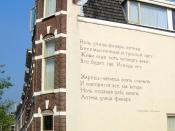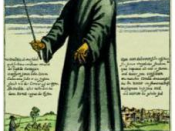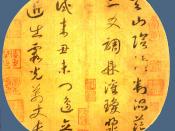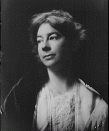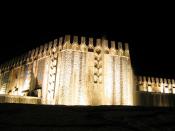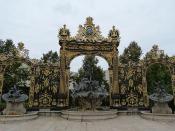Poetry Explication- The Fountain Sara Teasdale's "The Fountain" is a 3rd person reflective narrative that presents to the reader, through personifying a voice-less object, a new perception of reality. The main conflict in the poem is rooted from the new insight that the reader acquires. This conflict is the human struggle to determine the difference between appearance and reality. Each line in the poem is either trimeter, tetrameter, or hexameter. The poet uses every form of meter including the iamb, trochee, dactyl, anapest, and spondee, and they are not organized in any particular order except to add emphasis to certain phrases and words. The rime scheme is abcbddeeff.
The first stanza is characterized by an abcb rime scheme. The opening repetition in conjunction with using a trochaic meter of the word "fountain" stresses the address to the fountain. Using trochee in this situation emphasizes a beating tone when the reader encounters it.
The iamb that ends line 1 and the trochee that begins line 2 personify the actions of the fountain through a question from the narrator to the fountain. By stating that the fountain is "singing"(2) and that it can "say"(1) things it forces the reader abandon his normal perception of a fountain and enter the poet's imaginative interpretation of it. The response of the fountain in lines 3 and 4 show that it is content with its waters as they "rise and fall"(3) and that it does not want anymore. The fountain is content with what it has now because "It is enough" to do what it is doing currently. The riming of lines 2 and 4, as well as the use of similar meters of both lines, emphasize the last statement of line 4, which is "basin of stone"(4). The emphasis of this statement clarifies that the fountain is not a part of nature, that it is a manmade object made out of stone. Defining the fountain as separate from nature contributes to the understanding of the second stanza of the poem.
The second stanza, with rime scheme ddeeff , expands the conflict as the speaker begins to question the fountain. The first couplet connects the rhyming words "be"(5) and "sea"(6). These connections help stress the question of whether or not the fountain is content to be so close to "freedom"(6). The mere statement, "freedom and rush of the sea"(6) shows the stereotype that our human perception gives to it. By attributing freedom and rush to the sea, we define the sea as an ideal place for a fountain and its water to be. This is shown to be quite contrary to the fountain's point of view. The fountain's reply attributes the sea as "laboring"(7) versus the speaker's assertion of its freedom; the sea becomes characterized by heavily accented "heaves and sags"(8). In this way, the fountain suggests that the sea's waters may be described as an image of labor, work, and fatigue; governed by the moon. These waters are not free at all. The "as"(8) becomes a key word, illustrating that the sea's waters are not free at all, but are commanded by the moon, which is itself governed by gravity in its orbit around Earth. Since the moon, an object far away in the heavens, controls the sea, it cannot be free as the speaker asserts.
The poet reveals the fountain's intelligence in two rhyming couplets that present short, concise statements. These couplets, lines 7 through 10, draw attention to the contained nature of the all objects in the poem, and they draw attention to the lesson presented in the final line. On line 9, the poet choses to repeat the two related elements from previously in the poem, "Ocean and fountain"(9), but then adds another relationship: "shadow and tree"(9). The poet adds these two objects to show how even though these objects are a part of nature and appear to be objects of "freedom" to us, that they are actually bound by outside forces that they have no control over. The sun dictates the size, shape, and angle of a shadow, giving a shadow absolutely no freedom. A tree also relies on the sun, as well as water and nutrients. All of these things are beyond the control of the tree as to whether it gets these elements.
The last line works on several levels to address the conflicts in the poem. The final line addresses three objects-- the fountain, the sea, and the human reader. First of all, the fountain's perpetual motion, its continually recycled movement of rising and falling, and its image that the sea is not a place of freedom, provides for neither escape nor freedom. Next, the ocean cannot escape itself and go somewhere else, for it covers most of our planet, and there is hardly anywhere for it to escape to. There is also no freedom for the ocean, as no matter where it is, there are always other forces governing what it does. Last, the human reader receives the implication from the final line that we are all trapped or controlled by some remote object or entity.
This poem greatly emphasized the fact that our thoughts are restricted by our mortality as well as by our limitations of relying on the appearances of other things. By personifying a voiceless object, the poem presents a different perception of reality, placing the reader in the same position as the speaker and inviting the reader to question the conflict between appearance and reality, between what we see and what is real. This poem is highly successful in bringing that message back to the reader that our perception is not always reality.
